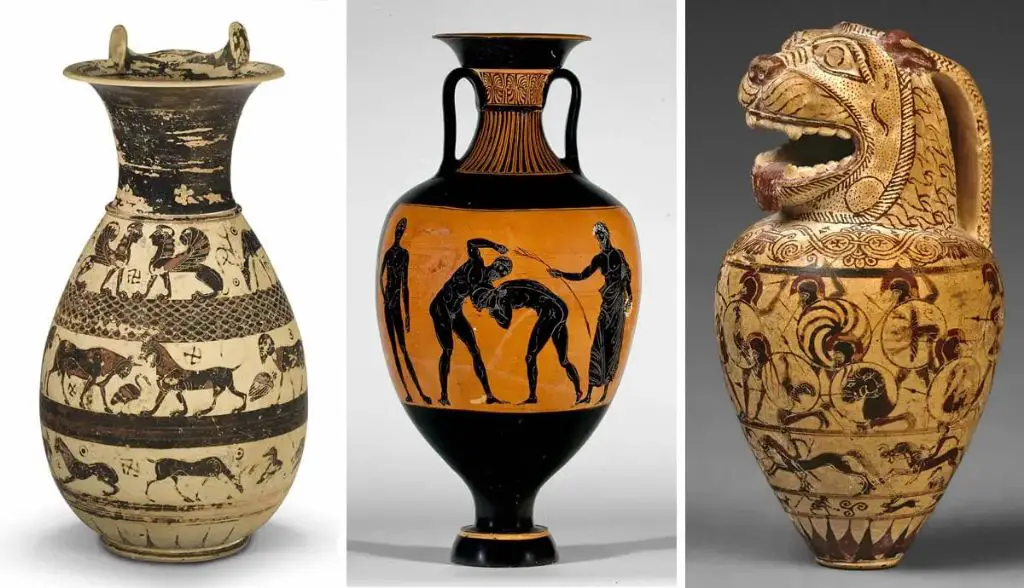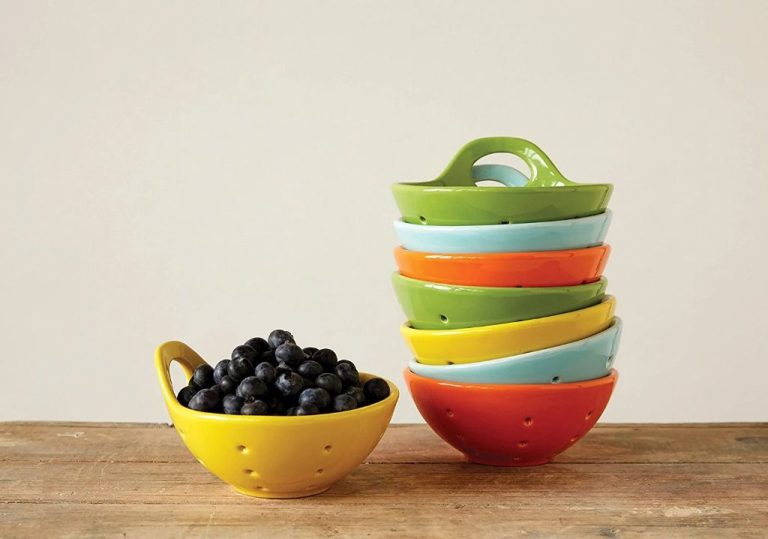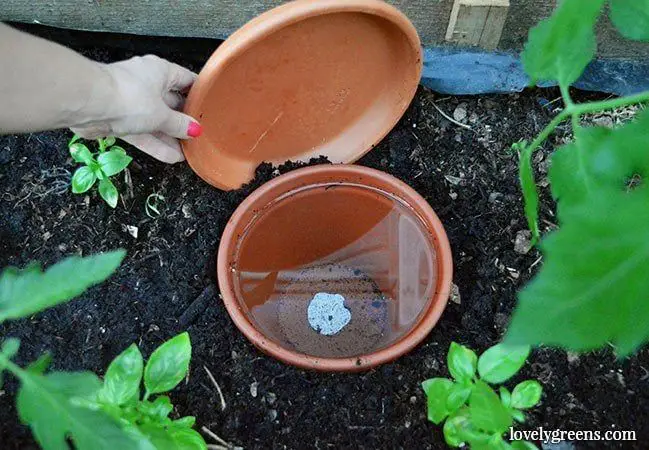Is Earthenware The Same As Ceramics?
Defining earthenware
Earthenware is a type of ceramic made from clay, quartz, and feldspar fired at relatively low temperatures between 1,000-1,150°C (1,830-2,100°F) [1]. The clay body contains around 25% quartz particles which vitrify and fuse the body during firing, resulting in relatively porous, opaque ceramics that are weaker and less dense than stoneware or porcelain [2].
Due to the low firing temperatures, earthenware retains more open pores allowing air and moisture to pass through the material. This makes earthenware permeable and less durable than higher fired ceramics. However, the porosity allows earthenware to be glazed and decorated using a wide range of techniques and colors [3].
Properties of earthenware
Earthenware is a type of ceramic made from clay and fired at lower temperatures, typically between 1,000-1,150°C. Due to the lower firing temperatures, earthenware has some distinctive properties:
It is porous and easily absorbs water. The clay body of earthenware contains small air holes and pores from gases escaping during firing. This makes earthenware permeable to liquids. Earthenware was commonly used historically for containers to hold liquids like water and wine precisely because it could slowly seep and evaporate the contents.
Earthenware is brittle and less mechanically strong than other ceramics. The porous clay body and low firing temperature result in earthenware having lower strength and hardness than ceramics fired at higher temperatures like stoneware and porcelain. Earthenware is relatively soft, brittle, and prone to chipping or cracking compared to other types of ceramic.
Its porosity allows earthenware to be decorated using colored glazes to create patterns and designs. The glaze is fluid enough to bond with the porous clay body during firing. Unglazed earthenware can also be decorated, but it readily absorbs liquids and stains.
Common earthenware clay bodies include terracotta, red earthenware, buff earthenware, and white earthenware, characterized by the color of the raw clay. The specific clay material affects the color and properties of the finished ceramic piece.
Types of earthenware
There are several common types of earthenware pottery and ceramics. Three of the most notable are:
Terracotta
Terracotta is a common red-orange colored earthenware made from clay that is fired at low temperatures. It has been used for pottery and other items for thousands of years. Terracotta gets its distinctive rust-like color from iron oxide in the clay. It is porous and not fully vitrified, making it absorbent. Terracotta was historically used for things like flower pots, bricks, roof tiles and some cookware. It’s still popular today for decorative pottery, plant pots, and sculpture.1
Stoneware
Stoneware is a strong, nonporous, vitrified earthenware that is fired at high temperatures around 2,200°F. The higher firing makes it more durable and water-resistant compared to low-fired earthenware. Stoneware clays are often blended with materials like quartz or sand to help prevent shrinkage and cracking during firing. Stoneware maintains its shape when heated, so it became popular historically for tea pots, jugs, and food storage crocks. Today it’s still widely used for oven-safe bakeware, tableware, and decorative items like vases.2
Ironstone
Ironstone, also called stone china, is a type of vitreous pottery pioneered in England in the early 19th century. It is a form of stoneware that contains iron oxide, giving it a characteristically off-white or grayish color. Ironstone is nonporous, chip-resistant, and stronger than normal stoneware. It was popular in Victorian times for heavy utilitarian dishes and has remained in use for dishware and motifs into modern times.1
Defining ceramics

Ceramics are a general term for inorganic, non-metallic materials that are typically made by shaping the raw materials and then firing them at high temperatures. According to the American Ceramic Society, ceramics can be defined as “inorganic, non-metallic materials that are subjected to high temperature during manufacture or use and may be crystalline or partly crystalline” [1]. The word “ceramic” comes from the Greek word keramos, meaning potter’s clay.
Ceramics are characterized by several key properties including high hardness, brittleness, chemical stability and low conductivity. They are typically compounds between metallic and non-metallic elements such as aluminum oxides, silicon carbides and glass [2]. Some of the most common ceramic materials are clay, cement, glass, and porcelain.
Properties of ceramics
Ceramics are known for their unique physical properties that make them useful for a wide range of applications. Some key properties of ceramic materials include:
Hardness – Ceramics are extremely hard, rigid, and resistant to scratches, deformation, and fractures from compression. Many ceramics, such as alumina and silicon carbide, have a Mohs hardness rating of 8 or higher, compared to 2.5-3 for most metals. This hardness comes from the strong atomic bonds in crystalline ceramics.
Brittleness – While very hard, ceramics are also quite brittle. This means they can fracture with little deformation or plastic flow. Ceramics do not bend or deform under stress like metals do. Once their yield point is reached, they tend to fracture. This limits their applications for flexible structures.
Heat and chemical resistance – Ceramics retain their strength and structure at very high temperatures, making them useful as refractories and insulators. They are also inert and non-reactive with most chemicals, acids, solvents, and other materials. This thermal and chemical resilience comes from the stable ionic and covalent bonds in ceramic crystals.
Sources: https://www.xometry.com/resources/materials/ceramics/, https://ceramics.org/about/what-are-engineered-ceramics-and-glass/structure-and-properties-of-ceramics/
Types of ceramics
There are various types of ceramics, broadly categorized into traditional ceramics and advanced ceramics.
Traditional ceramics, also known as pottery, are made from natural raw materials including clay, quartz, and feldspar. Some common types of traditional ceramics are:
- Pottery – Includes tableware items like plates, bowls, mugs, and vases. Pottery can be glazed or left unglazed.
- Bricks – One of the oldest and most common uses of ceramics. Bricks are used in construction projects.
- Tiles – Used to cover surfaces like floors, walls, countertops. Tiles are durable and come in various styles.
- Glass – Considered a ceramic because its main ingredient is silica, like sand. Glass can be blown, molded, or rolled.
Advanced ceramics utilize more purified materials and advanced production methods, resulting in precise components with enhanced properties. Some examples are alumina, zirconia, silicon carbide, and silicon nitride. Advanced ceramics have applications in fields like electronics, optics, medicine, and aerospace.
Relationship between earthenware and ceramics
Earthenware is a type of ceramic made from clay and other minerals that is fired at lower temperatures compared to other ceramics. While all types of earthenware are considered a form of ceramic, not all ceramics are classified as earthenware.
According to The Mossie, “Terracotta is the literal Italian translation for ‘cooked earth’. Terracotta is earthenware, a type of ceramic, that gets its rich orange color from high iron content clay fired at low temperatures” (https://m.facebook.com/277653863959754/). This demonstrates that terracotta, a common type of earthenware, is a subset of ceramics.
Similarly, as explained in an article on LinkedIn, “The most traditional is earthenware, a type of ceramic which needs to be glazed and which has an endless variety of shapes, colours and patterns” (https://fr.linkedin.com/pulse/portugal-its-traditions-soprasi?trk=article-ssr-frontend-pulse_more-articles_related-content-card).
In summary, while all earthenware qualifies as ceramic due to being made from clay and fired, not all ceramics are classified as earthenware.
Key Differences
There are some key differences between earthenware and other ceramics like stoneware and porcelain. The main differences relate to the firing temperature, porosity, and durability of the clay.
Earthenware is fired at lower temperatures, generally between 1000°F – 1200°F (cone 010-06). This results in a more porous clay that absorbs water. Due to the porosity, glazes are required on earthenware to make it impermeable to liquids. Earthenware tends to be less durable and prone to chipping compared to stoneware and porcelain.
Stoneware is fired at higher temperatures, between 2200°F – 2400°F (cone 9-11). The higher firing temperature makes stoneware less porous and more durable. Stoneware can be left unglazed, but glazes are often still applied for decorative purposes and to make it impermeable. Stoneware is considered more durable than earthenware.
Porcelain is fired at the highest temperatures, generally between 2300°F – 2600°F (cone 10-14). It becomes vitrified and non-porous. This makes porcelain more durable and resistant to chipping than earthenware. Porcelain can also withstand rapid temperature changes. Due to its non-porous nature, porcelain does not require an additional glaze to become impermeable.
In summary, earthenware is more porous and prone to chipping compared to stoneware and porcelain which are fired at higher temperatures. Earthenware requires an additional glaze coating to make it functional for holding liquids.
Modern uses
Today, earthenware is still widely used for a variety of purposes. Some common modern uses include:
Art – Many artists and potters work with earthenware clay to produce sculptures, decorative pottery, and other artistic creations. Earthenware’s porosity and warm look make it appealing for artistic uses. It can be stained, glazed, or left natural.
Cookware – Unglazed earthenware is an excellent material for baking and cooking. It conducts heat well and maintains temperature. Many baking dishes, pie plates, tagines, and other cookware are made from earthenware clays. Its durability makes it suitable for frequent oven use (SOURCE: https://en.wikipedia.org/wiki/Earthenware).
Flooring – Terracotta tiles made from earthenware clays are an attractive and durable flooring option, often used for patios, porches, and indoor floors. The tiles can be glazed or unglazed and come in a variety of earthy colors (SOURCE: https://seattlepotterysupply.com/pages/the-types-of-pottery-clay-and-what-they-are-used-for).
History and origin
Earthenware is one of the oldest known types of pottery and ceramic ware dating back thousands of years in human history. Evidence of earthenware production was found in ancient cultures across the world including the Middle East, Asia, Africa, Europe and the Americas. In China, the earliest forms of earthenware pottery emerged around 20,000 BCE during the Late Paleolithic period1. Meanwhile in Japan, earthenware emerged around 10,000 BCE known as Jomon pottery. In Mesopotamia, evidence of earthenware pottery production dates back to 7000 BCE.
Earthenware was essential for early human civilizations as it provided vital storage for food, water and other goods. The development of kilns and glazing techniques allowed earthenware to be improved over thousands of years across the world. While methods and styles varied by culture, earthenware remained an indispensable material throughout ancient history up until today.


